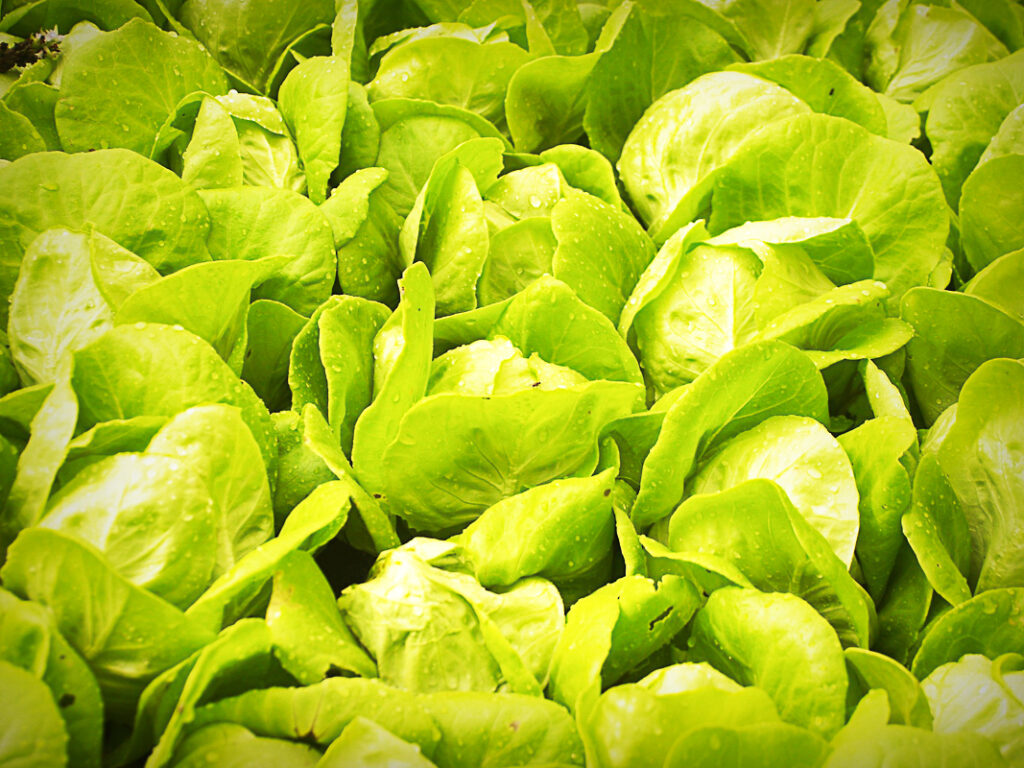Outdoor Hydroponics grows crops using nutrient-rich water to avoid the need for soil. It’s a centuries-old method of agriculture that produces high yields at fast growth rates. Here, we teach you everything a home-grower needs to know to get started.
*This post contains compensated links. Find more info in my DISCLAIMER. As an Amazon Associate, I earn from qualifying purchases.
Want to start a hydroponic garden at home easily? Check out our recommendations for Best Hydroponics Starter Kits for Beginners.
Outdoor Versus Indoor Hydroponic Growing
Opting for an outdoor hydroponic system has many pros. The first being cost. Indoor methods, like greenhouse hydroponics, have heftier start-up price tags. Things such as lighting, heating, and fanning structures easily add up.
This reason alone is a huge advantage of taking your hydroponics outdoors.
Another pro related to cost is sunlight. Not only are you avoiding costs of lighting fixtures, but you also have free access to the most optimal light there is: the sun!
Natural sunlight, especially during the summer months, is the most optimal for plant growth.
Using natural sunlight also grants the ability to use of a wider set of hydroponic systems. Less restrictive lighting and space allows growers to select multiple systems simultaneously. This optimization encourages growing a greater variety of plant types at larger sizes.
Along with sunlight, mother nature also provides free pollination. Indoor pollination can be a time-consuming process. Hydroponics outdoors relies on bees, birds, butterflies and many other animals who do the work for you.
Learn how to grow popular vegetables at home:
Growing Tomatoes Hydroponically
Growing Cucumbers Hydroponically

The Best Outdoor Hydroponic Systems For Growing At Home
1. The Kratky Method
For gardening newbies, we suggest starting with a passive hydroponic system using the Kratky Method. This method is a form of water culture where plants and water are in direct contact.
These systems require the least materials and set-up time. They are also the lowest- maintenance option in comparison to other systems that require more frequent nutrient changes. Plants that grow best with this method are lettuces, spinach, and herbs.
2. The Wicking Method
A new grower might also choose a wicking method of passive hydroponic gardening. It’s only marginally more complex in setup. This is because it uses at least two wicks that send water to the plants from a reservoir through capillary action.
Microgreens, peppers, tomatoes and other plants that do not require much water grow also thrive with this method.
3. The Ebb and Flow Method
Intermediate and experienced gardeners would do well to try out an ebb and flow system. Like the Kratky and wicking methods, this system also uses reservoir. Its increased difficulty lies in its need for a submersible pump and timer.
This system setup is more costly than those aforementioned. However, it benefits from being one of the most versatile options for outdoor hydroponic gardening. You can easily remove and alter crops from your garden without disrupting those surrounding it.
Almost any plants can be grown with this method with proper maintenance and cleaning.
Different outdoor spaces have different growing needs. Again, don’t be afraid to mix systems to better fit your specific circumstances.
Our 7 Things To Know About Outdoor Hydroponics
Plants To Avoid
We think it best to avoid plant species with large root systems. Hydroponic growing for these species is not cost or time effective. Therefore, you may want to omit potatoes, carrots, turnips, onions, and other root vegetables from your outdoor hydroponic garden.
Monitor Your pH
We find that many new growers forget to consider pH. This is an essential part of maintaining a successful outdoor hydroponics system. Changes in pH alter alkalinity and acidity.
These changes may cause your plants to starve as the nutrient viability of your water is often compromised. As a rule of thumb, keep pH around 5.5-6.5.
Heat Management
Unpredictable weather is a challenge for outdoor hydroponics systems. Better equip your plants to handle heat by adding calcium and humic acid to your water. These nutrients strengthen the cells of your plants and therefore increase their capacity to manage heat stress.
Look Out For Pests
Outdoor hydroponic gardens will always be vulnerable to pests munching on them. One way to protect your plants is growing supplemental ones around them as a buffer. You can also invest in sprays and soaps that help ward off unwanted critters in your crops.
The main thing to remember is that strong plants withstand pests best. This is why monitoring the N-P-K (nitrogen-phosphorus-potassium) ratio of your full-spectrum fertilizer is vital.
Different growing stags require different N-P-K ratios. Vegetative stages require higher nitrogen, while fruiting and flowering stages benefit from higher phosphorus and potassium.
System Wear And Tear
Hydroponics outdoors means more wear and tear to your system. This is a downside to any outdoor gardening method.
To reduce damage, it may be beneficial to shade some parts of your system under a tarp. This increases the lifespan of your system by protecting materials from things such as UV rays and rain.
Monitor Electrical Conductivity
Similar to pH, electrical conductivity (EC) is an important part of hydroponics. EC is basically an indicator of your dissolved salts to water ratio. Nutrients are partly made of salt, so the higher the EC the more nutrients are present.
During the summer months, it would be a good idea to lower your EC. This gives your plants a better chance of absorbing enough water.
Manage Your Time
It’s important to remember that an outdoor hydroponic garden can be time-consuming. Unlike soil plants that can be left for days or weeks, hydroponic plants need to be checked daily.
It’s a good idea to set regular intervals of water replacement. Organizing a schedule that you can stick to is key for success.
Overall, hydroponics outdoors is an awesome method of plant growing. Its advantages far outweigh its shortcomings. The more practice you gain in dealing with hydroponics’ basic principles and outdoor elements, the easier it will become.
The Best Plants For Outdoor Hydroponics
Most plants do well in outdoor hydroponics, especially in the summer when there is adequate sunlight for your plants’ optimal growth. However, not all plants perform well in hydroponics outdoors. Lightweight plants with small roots are considered the best. They include:
Lettuce
Lettuce should be one of your first plants to try with a backyard hydroponic garden. These crops have a short above-ground height that matches their shallow root system. You don’t have to struggle with tying set guides or stakes for lettuce.
All you have to do is let them grow and change the nutrient solution regularly. Furthermore, lettuce has a quick growing time of about 30 days. You should also consider staggering planting so that you have a continuous supply.
Spinach
Spinach grows quickly, especially when using Nutrient Film Technique (NFT). NFT is the best outdoor hydroponic system because it ensures the nutrient solution is highly oxygenated. You will also use less water compared to a traditional garden.
It is easier to start spinach from seed and move them into the hydroponic system a week after sprouting. In addition, it grows well and faster in temperatures of between 65 and 72 degrees Fahrenheit.
Strawberries
Strawberries are seasonal plants, but you can extend their growing season with a backyard hydroponics system. They tend to do well in any hydroponics system because they are small crops. Harvesting is pretty simple as well.
Strawberries take about 60 days to harvest. However, you should not use seeds; instead, use cold-stored runners because they are ready for hydroponics.
Herbs
A wide variety of herbs work well for hydroponics outdoors. These plants are small with shallow roots, and they grow faster. They are also ideal for testing your hydroponic system because they do well with nearly all techniques.
Advantages Of Outdoor Hydroponic Systems
Outdoor hydroponics has numerous benefits because it offers the best balance between water and nutrients, enabling your corps to grow faster and yield more. Here are some of the advantages of an outdoor hydroponic garden.
Natural Sunlight
Not only is the sunlight free but also completely organic. It is therefore much healthier than the artificial lights used in indoor hydroponic systems. Furthermore, you will enjoy significantly lower energy bills when your outdoor hydroponic garden utilizes natural sunlight.
Natural Environment
A backyard hydroponics system exposes plants to a natural environment, which is their original habitat. The humidity, temperature, and light intensity are natural even though the plants are not growing on soil.
Easy Pollination
You may require to do manual pollination in an indoor hydroponics system. However, nature takes care of pollination in outdoor gardening. Birds, wind, bees, and other plants pollinate plants growing outdoor.
Lower Power Consumption
An outdoor hydroponic garden does not need the power-consuming equipment required in indoor hydroponics. Unlike in indoor gardening, mother nature takes care of all the elements in outdoor gardening. You do not need equipment to control temperature, humidity, air movement, and lighting.
More Space
Outdoors provide more space for your gardening needs. Outdoor hydroponics is customizable to any location, area, or application. Depending on the available space and your preferences, you can stack, hang, or set up your hydroponic garden vertically or horizontally.
Lower Start-Up Costs
In contrast to outdoor hydroponics, where nature provides all three, indoor hydroponics requires you to purchase lighting, ventilation, and fans. The lack of this equipment makes setting up an outdoor hydroponics system less expensive.
FAQs – Outdoor Hydroponics
Absolutely yes! Hydroponics work well both indoors and outside. Like all forms of home growing, it’s important to keep an on eye things like weather, climate, and other growing factors. Depending on where you live, using hydroponics outside in colder climates might be ideal.
Rain can have positive and negative effects on outdoor hydroponics. If your growing area is uncovered, rain can affect the pH level of your nutrient solution. This will result in a poor crop. Additional rain will result in having to recalculate the amount of water in your hydroponic system.
There are several ways to start an outdoor hydroponic garden. If you are new to home gardening, buying an outdoor hydroponic garden kit might be the best solution. Growing kits contain all you need to get started.
